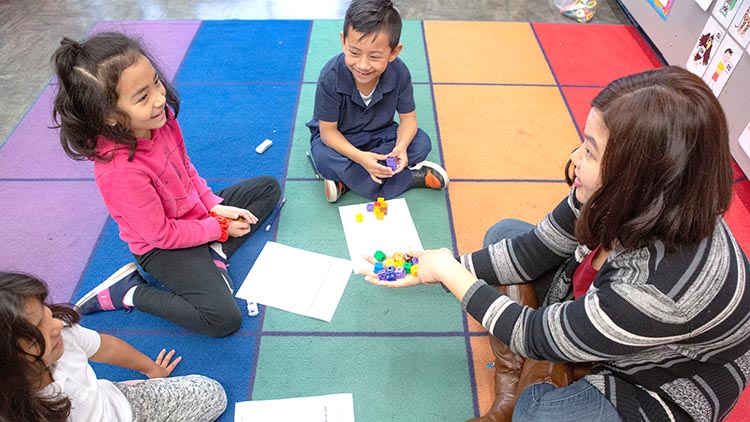
To prevent the rise of math anxiety in elementary students, teachers need confidence in their own conceptual understanding of the subject.
From Edutopia
By Shelby Strong
April 28, 2021
For many students (and many adults), just hearing the word math can send a chill down their spine. Suddenly there are vivid flashbacks of being embarrassed in front of classmates, of having questions that no one answers hanging in the air, or feeling like a complete failure for not knowing an answer immediately.
Educational consultant Heidi Sabnani defines math anxiety as “any sense of anxiety when asked to do a mathematical task,” and math trauma as “an abusive math practice by another which causes math anxiety in someone else.”
My first brush with math anxiety came in college. I had breezed through math from elementary through high school. Then I enrolled in calculus and hit a wall. Nothing made sense. I got my first F ever on a test. I attended tutoring sessions and watched countless videos, but nothing helped me understand, and my professor offered little to no support. My very identity as a math person was rattled. I even considered changing my major so that I wouldn’t ever have to feel that way again.
THE CAUSE
Many adults I have spoken with said their math anxiety began with required timed tests in elementary school. They knew the answers, but their brains froze when up against the clock. Others remembered wanting to understand the why and not just the how, and receiving lackluster or even hostile responses. In particular, women and people of color I have spoken with expressed their frustration at being labeled bad at math because their ideas didn’t mirror what their teachers expected.
Without intervention, children who experience math trauma and math anxiety often grow up to become adults with these unresolved issues. Some may become parents who feel helpless when their child brings home math homework. Some may become teachers or administrators who feel powerless when their students don’t understand the content or make self-deprecating comments about not being a math person. Their pain gets passed to the children, and the cycle continues.
Math anxiety and math trauma are very real, are extremely debilitating, and have been studied for decades. Yet they persist. Why, and what can we do about it?
Rushed implementation of the Common Core State Standards in many states and lack of appropriate professional development to accommodate the changes left many educators scrambling to completely change their style of pedagogy without ever being shown how—or why such changes were necessary in the first place. For instance, teachers are being asked to use arrays and area models and tape diagrams and number bonds, even though they may not completely understand these modeling strategies themselves.
THE CURE
The math classroom that prioritizes rote memorization, meaningless algorithms, and speed must become a relic of the past, and those of us who learned in those classrooms must take a deep dive and hone our own conceptual knowledge. Students need procedural fluency and efficient problem-solving strategies, for sure, but these must be rooted in understanding why the math works, which means the adults need to know why the math works.
Methods of math instruction that focus on conceptual understanding may take longer than what we’re used to, but the positive results are well worth the time. The mysteries of fractions, integers, and variables, topics that often cause the greatest amount of distress, can all be unlocked by a solid understanding of arithmetic crafted in the early grades. This means allowing ourselves to be vulnerable and letting our guard down in front of students by encouraging their questions and being willing to admit that we may not have all the answers.
After my disastrous brush with calculus, I took Intro to Linear Algebra and Intro to Discrete Structures with a wonderful professor who wanted us to understand why the math worked. I sat in awe as he walked us through a proof of why the product of two odd numbers was always odd. I wondered why no one had ever been able to show me mathematics like this before. It took a long time before I realized that my teachers couldn’t help me see this earlier because they didn’t know it either.
Several educators are on a mission to assist their colleagues in the math community. Graham Fletcher hosts a series of videos on his website breaking down the progression of math topics, including addition, subtraction, multiplication, and division. Math educator and author Pam Harris regularly posts problems on Twitter and welcomes others to find clever solutions to arithmetic problems. Everyone is invited to participate at their comfort level and share their reasoning. Howie Hua, a math instructor at Fresno State, regularly shares his experience teaching math to future elementary school teachers on Twitter.
We have the power to break the cycle of math trauma and anxiety. No one should ever feel terrified of math. Math should be a subject where the rules of logic are tested, and then tested again. When teachers have both a strong conceptual understanding of math and a strong confidence in their ability to do math, they will be able to pass those on to students.
Photo: Allison Shelley for the Alliance for Excellent Education
Read this and other stories at Edutopia

